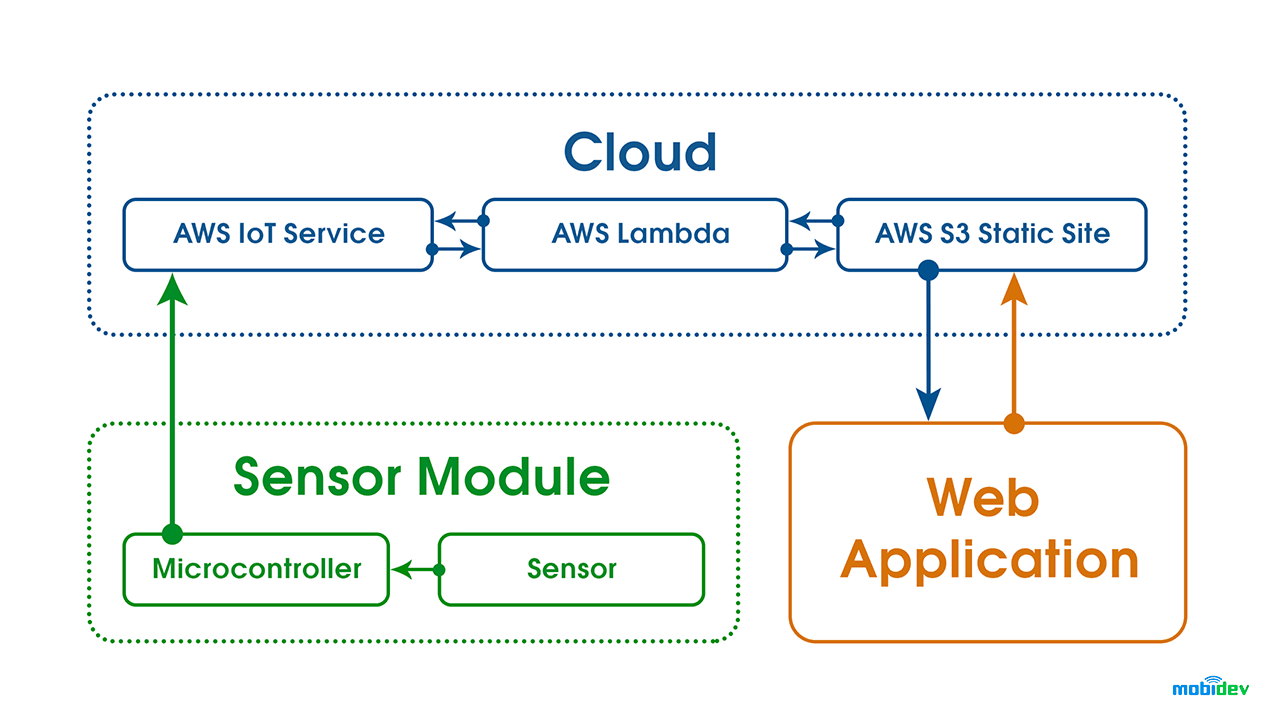Anger, annoyance, even a meltdown… What other emotions have you felt when looking for a free parking slot?
Living in cities can be troubling. Urbanization is always expanding, and traffic in cities is becoming heavier every day. The UN Department of Economic and Social Affairs (UN DESA) predicts that all of the increase to the world’s population will live in urban areas. This increase is predicted to be as much as 68% by 2050. The population growth is not only a pressing issue for the government but a tangible daily reality for most citizens.
Smart Parking System. The Modern Trend or a Growing Need?
The problem is quite obvious. But a bigger question is what can technology do to solve it? Is there any way to solve the problem?
How Smart Parking System Works
Smart parking development implies an IoT-based system that sends data about free and occupied parking places via web/mobile application. The IoT-device, including sensors and microcontrollers, is located in each parking place. The user receives a live update about the availability of all parking places and chooses the best one.
In order to investigate technologies behind the smart parking solution, we implemented an internal research project. The main idea was the creation of smart parking using the Internet of Things and ultrasonic sensors, where available parking places could be displayed in a web application.
IoT Based Smart Parking Solution
Used IoT ecosystem:
Hardware: ESP8266 microcontroller, HC-SR04 distance measurement sensor
Network: MQTT protocol
Cloud & Analytics: Amazon Web Services: AWS IoT, AWS Lambda
Used Programming Languages: MicroPython, Python, JavaScript
User Interface: JavaScript-based web application

The IoT device consists of an ESP8266 microcontroller and an HC-SR04 distance measurement sensor. The sensor periodically measures the distance and transmits this data to the microcontroller, which is connected to AWS IoT service via the MQTT protocol.
Periodically, the device sends measurements to the cloud where they are stored in AWS IoT shadow as a sensor state. A sensor detects a parked car by measuring the distance to the nearest obstacle—in our case, to the bottom of the car. The state can be “occupied” if the distance is in the range of 100mm – 500mm, “free” if the distance is more than 500mm and “dirty” if the distance is less than 100mm, which means that the sensor may be unclean. All of these values can be easily configured. These values represent both free and occupied parking lots.
In our case, if the sensor detects nothing up to 50 cm, the status is set to “free” and is shown to the user.

The “occupied” range is between 10 and 50 cm.

Below 10 cm, the status is “dirty”. It means the sensor might be covered with mud or an obstacle, and requires checking.
When a driver accesses the system via web application, a signal is sent to the Lambda function. It reads the sensor state values from AWS IoT shadow and displays parking spaces depending on the state. Green color – free space, red color – occupied space, yellow color – pollution.

For now, this particular solution may be used for MVP and POC (proof of concept).
The building of a full-fledged IoT based smart parking system will be different. Hardware, software and firmware selection will depend on the size of the specific parking area and the number of parking slots.
Mobile and/or web application features also play a big role in the IoT system architecture. If business requirements show demand for a smart parking development, a more advanced application might be created.
Other Tech Options for Smart Parking System
The improvement of smart parking system depends on business needs. Taking into account retail and healthcare technology trends, smart parking might take priority. Returning to our smart parking solution, the main features that might be improved are:
LoRaWAN protocol will increase the autonomous operating time of a smart parking system. Due to LoRa Alliance’s specification, the LoRaWAN protocol is optimized for low power consumption, which means that you don’t need to change batteries more often than once every 2-5 years. Furthermore, it is designed to scale from a single gateway installation up to large global networks with billions of devices. Thus, it would be a good idea to apply this or any LPWAN protocol for a smart park.
Data Science and Computer Vision technologies based on video stream are also a perfect match for IoT-based innovations. On the subject of smart parking development, Data Science, Machine Learning and Computer Vision might be applied for car number recognition.
This feature allows:
- Automatic gate opening, if the car belongs to a given park
- Navigation of cars to available and suitable parking slots
Sensor integration is also a good upgrade for smart parking systems. The most applicable are:
1. Ultrasonic sensors
Ultrasonic sensors measure distance by using ultrasonic waves in time between the emission and reception. Advantages: high accuracy of the sensor. The disadvantages: the probability of sensor contamination.
2. Electromagnetic field sensors
Electromagnetic field sensor is a small-scale microelectromechanical system device for detecting and measuring magnetic fields. The solution is based on the change of the electromagnetic field as the metal mechanisms approach one another.
3. Infrared sensors (IR sensor)
An infrared sensor is an electronic device that emits in order to sense some aspect of its surroundings. An IR sensor can measure the heat of an object as well as detect motion. An IR sensor works in a similar way to ultrasonic sensors.
Custom mobile and web IoT applications might be developed depending on business needs. The function of a parking slot order may be a killer feature for mobile/web apps. If a parking area is a few kilometers long, an integrated AR navigation may help drivers not to get lost looking for own car.
All the features mentioned above are not the limit of the technology. The more technology innovations we implement, the more features we can add. For most cities, smart parking is still evolving technology. Only by implementing new ideas can we make smart solutions like these available and use them to improve our everyday life.







